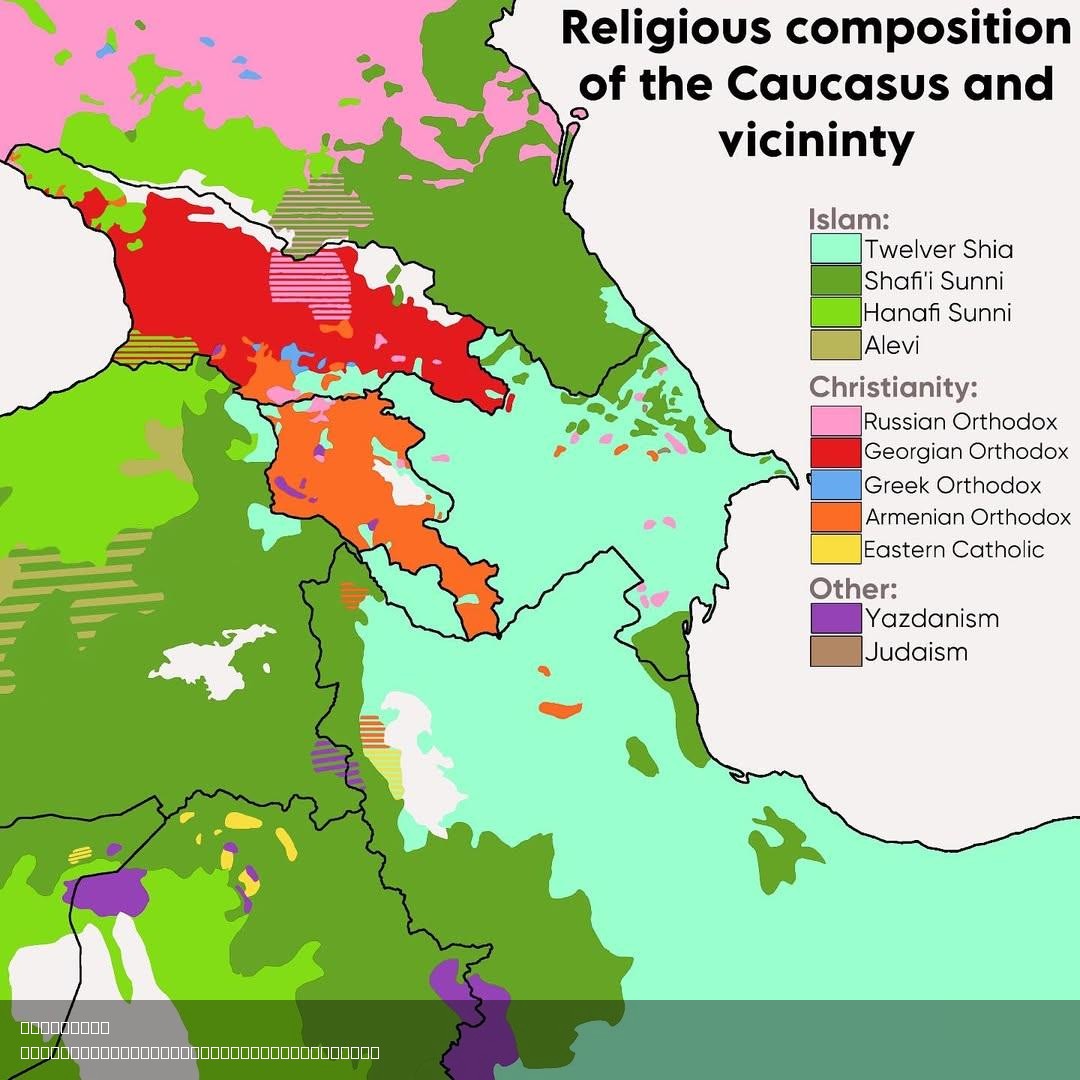Religious Diversity in the Caucasus Map


David Chen
Data Visualization Specialist
David Chen is an expert in transforming complex geographic datasets into compelling visual narratives. He combines his background in computer science ...
Geographic Analysis
What This Map Shows
The "Religious Diversity in the Caucasus Map" provides a detailed visualization of the complex tapestry of faiths in the Caucasus region, which encompasses countries such as Armenia, Azerbaijan, and Georgia. This map highlights the distribution of major religions like Christianity, Islam, and Judaism, along with the presence of various smaller religious groups. It serves as a window into the intricate interplay of culture, history, and spirituality that defines this unique area.
Deep Dive into Religious Diversity
The Caucasus is a melting pot of religions, shaped by centuries of history, migration, and conflict. At its core, the region is predominantly influenced by two major faiths: Christianity and Islam. Interestingly, Armenia stands out as one of the world's first countries to adopt Christianity as its state religion in 301 AD. The Armenian Apostolic Church is central to Armenian identity, making the country distinctively Christian in a largely Muslim region.
In contrast, Azerbaijan is primarily Muslim, with approximately 95% of the population identifying as either Shia or Sunni Muslims. However, what’s fascinating is how Azerbaijan also embraces secularism, with many citizens identifying as non-religious or practicing a form of cultural Islam that is less observant. This secular approach is crucial to understanding the country's modern identity amid its Islamic heritage.
Georgia, on the other hand, has a rich Christian tradition with the Georgian Orthodox Church playing a pivotal role in its national identity. About 83% of Georgians belong to this church, which traces its roots back to the early centuries of Christianity. The diverse religious landscape also includes smaller communities, such as the Yazidis and Jews, particularly in urban areas.
The intricate tapestry of religious belief is not merely academic; it plays a significant role in shaping the cultural and political landscape of the region. The interactions between these faiths often lead to both cooperation and tension, highlighting the need for understanding and dialogue in a region marked by its diversity.
Regional Analysis
When we analyze the religious make-up of specific regions within the Caucasus, distinct patterns emerge. For instance, in Armenia, the overwhelming majority are Christians, which creates a homogenous religious landscape. In contrast, Azerbaijan's major cities like Baku exhibit a mix of religious identities, where Islamic traditions coexist with a substantial secular population.
Meanwhile, in Georgia, regions such as Adjara and Abkhazia showcase a blend of religious affiliations, with Orthodox Christianity being predominant but with significant Muslim and other minority communities. For example, the Muslim population in Adjara is notable, reflecting historical ties to the Ottoman Empire.
What’s particularly interesting is the influence of religion on local customs and traditions. In rural communities, religious practices often dictate the rhythm of life, from festivals to daily routines. In urban centers, however, there is a trend toward secularism, where traditional beliefs may be observed in a more cultural rather than spiritual sense.
Significance and Impact
Understanding religious diversity in the Caucasus is crucial for several reasons. Firstly, it provides insight into the historical relationships and conflicts that have shaped the region. For instance, the tensions between Armenia and Azerbaijan over Nagorno-Karabakh are often underpinned by not just geopolitical factors but also religious identities, with Armenia being predominantly Christian and Azerbaijan Muslim.
Secondly, this diversity has implications for contemporary politics and social cohesion. As global interconnections deepen, the ability of diverse religious groups to coexist peacefully is essential for stability in the region. Current trends indicate a growing secularization in urban areas, which could lead to shifts in how religion influences identity and politics in the future.
Lastly, recognizing and respecting this diversity can pave the way for interfaith dialogue and cooperation, fostering a more harmonious society. In an age where religious extremism can threaten peace, understanding and appreciating the rich tapestry of beliefs in the Caucasus is more important than ever. How can we promote this understanding? Through education, dialogue, and a commitment to celebrating diversity, we can work towards a more peaceful coexistence in this vibrant region.
Visualization Details
- Published
- August 7, 2025
- Views
- 224
Comments
Loading comments...